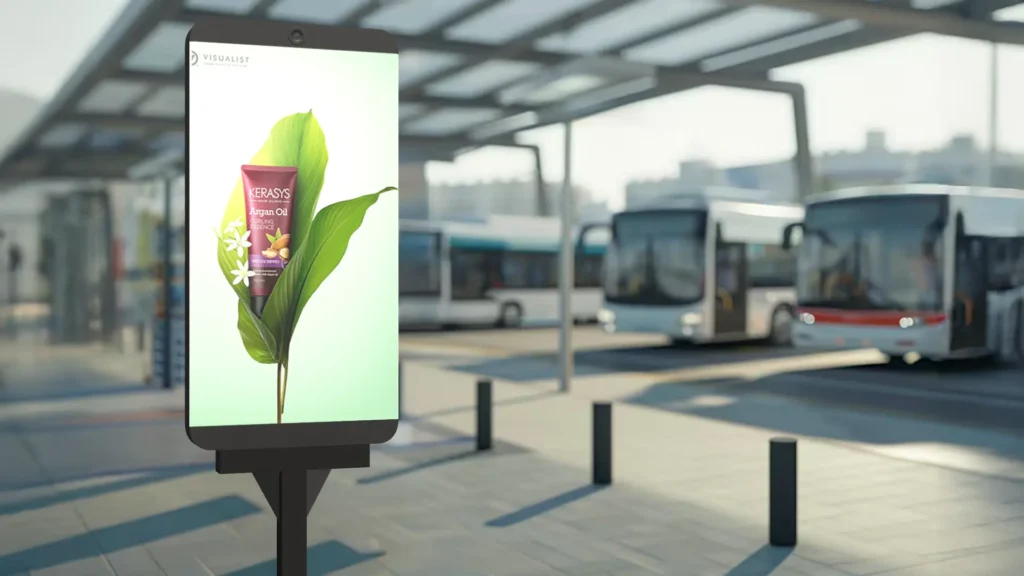Advertising is evolving, and digital advertising in public transit is one of its fastest-growing areas. Transit advertising has traditionally been an effective way to reach urban audiences. Now, with the introduction of Digital Out-Of-Home (DOOH) technology, its impact is increasing. DOOH uses digital screens instead of printed ads, allowing content to be updated instantly. This flexibility enables more timely, relevant messaging and greater engagement. As a result, transit advertising is becoming more dynamic, efficient, and effective.
What is Transit Advertising?
Transit advertising refers to ads placed in and around public transport, such as buses, trains, stations, and bus stops. These ads can be seen by thousands of people every day, making transit one of the most visible advertising spaces. In the United States, transit ads make up about 18% of all out-of-home advertising spending, according to the Outdoor Advertising Association of America (OAAA).
What Makes DOOH Different?
Digital Out-Of-Home (DOOH) advertising displays ads on digital screens. Unlike traditional printed ads, these digital messages can be updated rapidly and managed remotely. This flexibility allows advertisers to adjust content according to factors like the time of day, weather conditions, or special occasions to more effectively reach their audience.
In public transport, DOOH screens can be found inside stations and stops. This setup helps brands reach commuters who spend time waiting or traveling, offering them engaging and relevant ads.
Benefits of DOOH Advertising in Transit
Using DOOH in public transport offers several key benefits:
- Better Targeting: Advertisers can change ads throughout the day to reach different groups of people, making their messages more relevant.
- More Engaging Content: Digital ads can include videos and animations, which are more eye-catching than static posters.
- Proven Impact: Research shows that DOOH advertising can boost brand recall by 47%. Additionally, campaigns using dynamic content have increased sales by 5% to 10%, according to a 2023 Nielsen study.
Why DOOH is Growing in Public Transport
Public transport is an ideal place for DOOH advertising because people spend time waiting or traveling, giving advertisers a captive audience. Cities around the world are adding digital screens to buses, trains, and stations to take advantage of this.
Market research from Grand View Research predicts the global DOOH market will grow by nearly 12% annually from 2024 to 2030, with transit advertising being a key driver of this growth.
Challenges to Consider
DOOH has many benefits but also some challenges:
- Installation and Maintenance: Setting up and running digital screens across a city’s transit system requires a lot of planning and investment.
- Privacy Concerns: Using data to target ads must be done carefully to respect privacy laws.
- Regulations: Local rules may limit the types of ads that can be shown or require permits.
Conclusion
Transit DOOH advertising combines the large audience of public transport with the flexibility of digital media. Supported by data showing its effectiveness, this type of advertising offers a valuable way for brands to connect with people in busy urban environments. As cities upgrade their transit systems, DOOH advertising is expected to play an even bigger role in the future.


